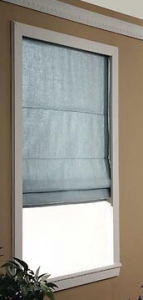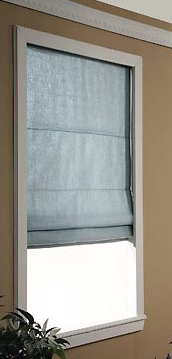
Since the sun is rising early and setting late these days and my husband, Anil, has trouble sleeping unless the room is dark, I realize I really need to focus my attention on replacing our bedroom window shade with one that has a blackout backing. My husband thinks I’m too busy to sew one myself right now, so I’ve started looking around for reasonably priced custom or semi-custom alternatives. One window treatment company I worked with while I was the editor in chief of a group of decorating and design magazines was Budget Blinds. I visited its site recently and noticed a post on its AboutStyle.com blog that reinforced my commitment to getting a window shade that’ll help to promote a good night’s sleep.
The post starts by noting some of the physiological side effects of losing sleep, including slower thinking, slower reaction times, moodiness and exhaustion. Here’s what Suzi Carragher, the author of the post, said you could do with window treatments to help you get the rest you need:
“What’s a moody, exhausted, slow thinking, sleep-deprived person to do to get more sleep? One suggestion is to create an environment that’s conducive to sleep—dark, cool, quiet and comfortable. The window treatments you choose for your bedroom can help create the perfect sleep environment for you. ‘There are wonderful window treatments that block light and prevent heat gain, making them excellent choices for the bedroom,” said Tracy Christman, director of vendor alliance for Budget Blinds. If drawing the blinds closed doesn’t block light from that pesky streetlamp from disturbing your sleep, there’s still hope. The key to a better night’s sleep may lie with your window treatments—specifically, the features you add to them.
Here are some of the ways Suzi suggests sleep-deprived homeowners can enhance their window treatments to promote a good night’s sleep:
•Add a blackout liner, which is especially important for light sleepers or new parents, or people who work during evening or night hours and sleep during the day.
•Add decorative tapes to horizonal blinds to block light that enters through rout holes, or choose routless louvers for your blinds.
•Install cornice boxes or valances that can block light that enter through the small gap at the head rail of the window treatment.
•Consider room-darkening cellular shades that can block light and add insulation between cooled or heated indoor air and the glass.
• Think about integrating programmable motorization. Sleep experts encourage troubled sleepers to wake at the same time every day. Just set the programmable timer to open your window treatments at a specific time in the morning and the light that was blocked all night will help wake you.
Suzi’s sources for some of this information were the National Sleep Foundation and WebMD.com.
All that sounds good to me. So I’ve called Budget Blinds to set up an in-house consultation later this week. To find out more about what the company has to offer, visit its Web site. I’ll keep you posted on what happens for me.




